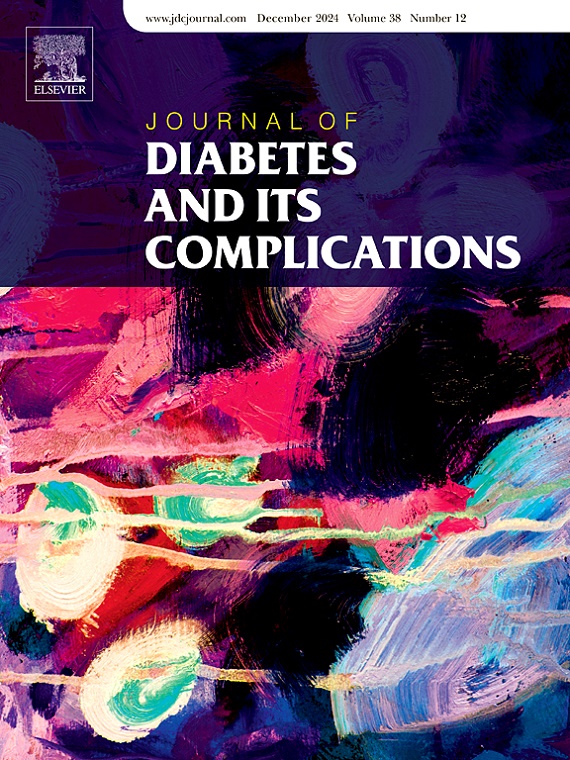Heterogeneity of treatment effects of glucose-lowering drug classes for type 2 diabetes: LEGEND-T2DM network real-world evidence
IF 3.1
3区 医学
Q3 ENDOCRINOLOGY & METABOLISM
引用次数: 0
Abstract
Aims
To assess heterogeneity of treatment effects (HTE) of glucose-lowering drug classes by clinical (cardiovascular [CV] risk, renal impairment) and demographic (age, sex) subgroups in adults with type 2 diabetes mellitus (T2D).
Methods
The LEGEND-T2DM network identified 4,746,939 adults with T2D on metformin monotherapy who initiated one of four glucose-lowering drug classes: glucagon-like peptide-1 receptor agonists (GLP-1 RA), sodium-glucose cotransporter 2 inhibitors (SGLT2i), dipeptidyl peptidase-4 inhibitor (DPP-4i) or sulfonylureas. HTE was assessed between glucose-lowering drug classes by clinical (low CV risk vs. higher CV risk; without renal impairment vs. renal impairment) and demographic (lower vs. middle vs. older age; male vs. female) subgroups. Outcomes included MACE (primary), acute myocardial infarction, stroke, sudden cardiac death and safety endpoints.
Results
Pairwise differences (n = 1115 tests) between adjusted hazard ratios (HRs) showed 49 nominally significant associations (p < 0.05) and one statistically significant difference after Bonferroni correction (p < 4.5 × 10−5). Among older subjects (vs. younger), those taking GLP-1 RA (vs. sulfonylureas) had statistically significant difference in risk of hypoglycemia (HRs: lower age, 0.53 ± 0.14 vs. older age, 0.20 ± 0.05, p < 0.001).
Conclusions
HTE among glucose-lowering drug classes by clinical and demographic subgroups may provide guidance to generate hypothesis-testing studies to inform T2D treatment decisions.

2型糖尿病降糖药物治疗效果的异质性:LEGEND-T2DM网络真实世界证据
目的评估2型糖尿病(T2D)成人患者降糖药物治疗效果(HTE)的临床(心血管[CV]风险、肾脏损害)和人口统计学(年龄、性别)亚组的异质性。方法:LEGEND-T2DM网络确定了4,746,939名接受二甲双胍单药治疗的成年t2dm患者,他们开始使用四种降血糖药物之一:胰高血糖素样肽-1受体激动剂(GLP-1 RA)、钠-葡萄糖共转运蛋白2抑制剂(SGLT2i)、二肽基肽酶-4抑制剂(DPP-4i)或磺脲类药物。通过临床(低心血管风险vs.高心血管风险;无肾损害vs.肾损害)和人口统计学(低龄vs.中年vs.老年;男性与女性)子群体。结果包括MACE(原发性)、急性心肌梗死、卒中、心源性猝死和安全性终点。结果校正后的风险比(hr)的双侧差异(n = 1115次)显示49个名义上显著相关(p <;0.05),经Bonferroni校正后差异有统计学意义(p <;4.5 × 10−5)。在老年受试者中(与年轻受试者相比),服用GLP-1 RA(与磺脲类药物相比)的低血糖风险差异有统计学意义(hr:低龄组,0.53±0.14 vs老年组,0.20±0.05,p <;0.001)。结论按临床和人口亚组划分的降糖药物类别的shte可能为生成假设检验研究提供指导,从而为T2D治疗决策提供依据。
本文章由计算机程序翻译,如有差异,请以英文原文为准。
求助全文
约1分钟内获得全文
求助全文
来源期刊

Journal of diabetes and its complications
医学-内分泌学与代谢
CiteScore
5.90
自引率
3.30%
发文量
153
审稿时长
16 days
期刊介绍:
Journal of Diabetes and Its Complications (JDC) is a journal for health care practitioners and researchers, that publishes original research about the pathogenesis, diagnosis and management of diabetes mellitus and its complications. JDC also publishes articles on physiological and molecular aspects of glucose homeostasis.
The primary purpose of JDC is to act as a source of information usable by diabetes practitioners and researchers to increase their knowledge about mechanisms of diabetes and complications development, and promote better management of people with diabetes who are at risk for those complications.
Manuscripts submitted to JDC can report any aspect of basic, translational or clinical research as well as epidemiology. Topics can range broadly from early prediabetes to late-stage complicated diabetes. Topics relevant to basic/translational reports include pancreatic islet dysfunction and insulin resistance, altered adipose tissue function in diabetes, altered neuronal control of glucose homeostasis and mechanisms of drug action. Topics relevant to diabetic complications include diabetic retinopathy, neuropathy and nephropathy; peripheral vascular disease and coronary heart disease; gastrointestinal disorders, renal failure and impotence; and hypertension and hyperlipidemia.
 求助内容:
求助内容: 应助结果提醒方式:
应助结果提醒方式:


